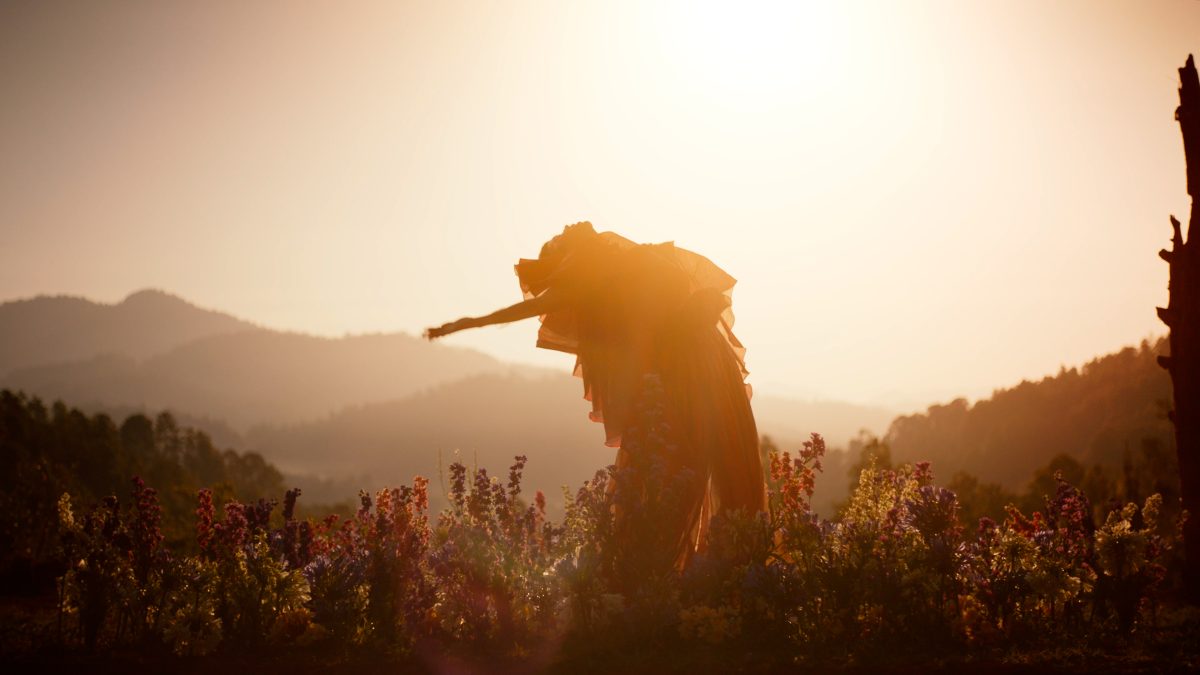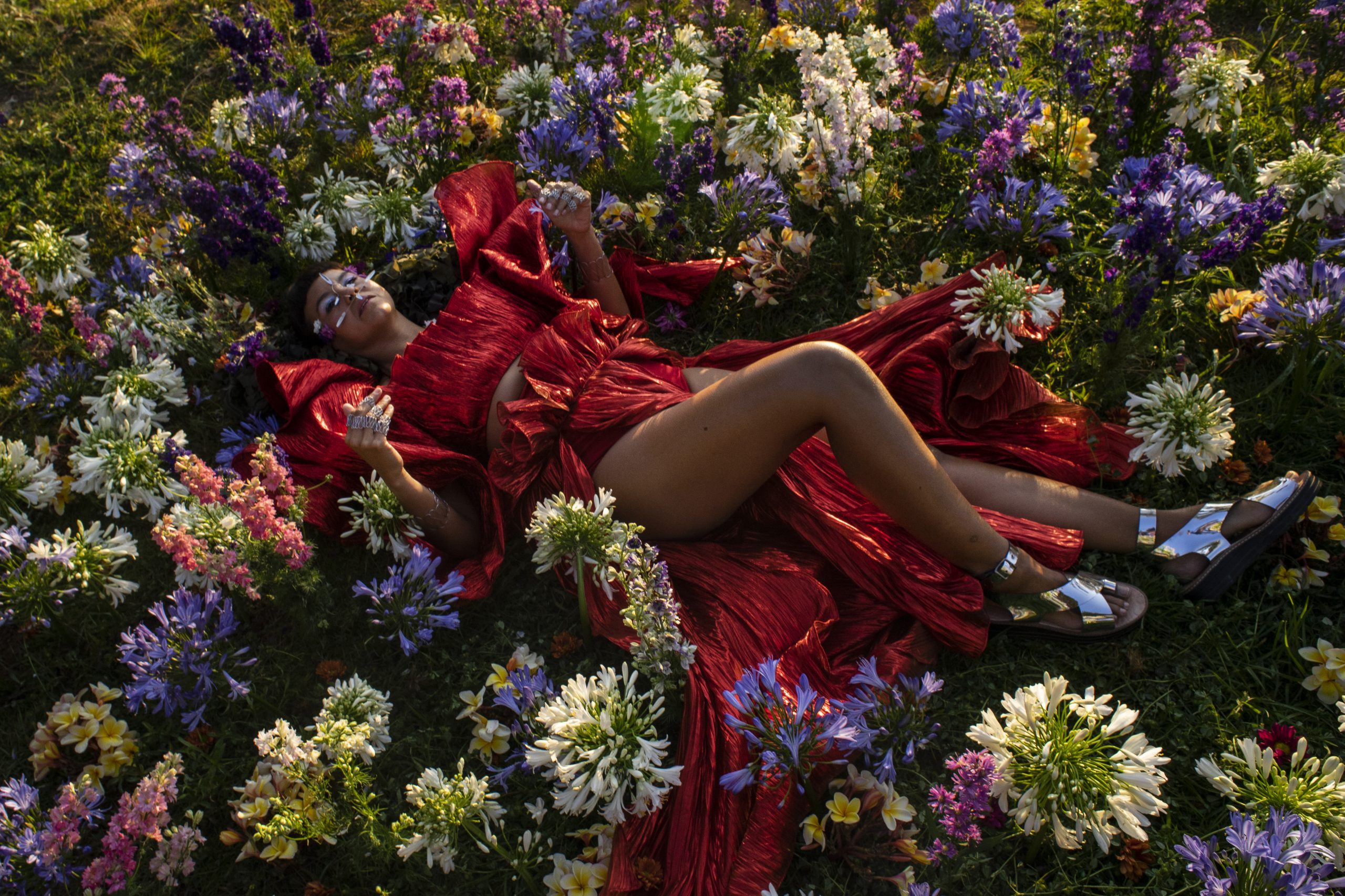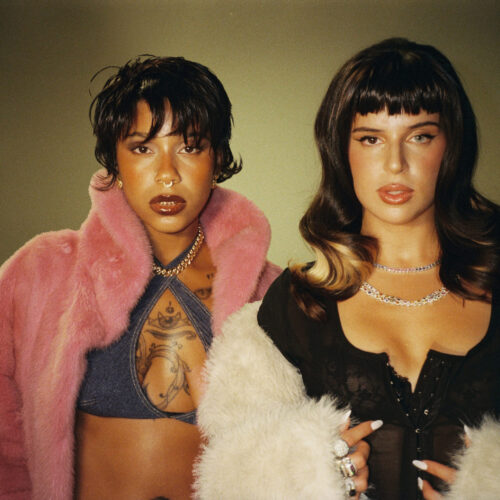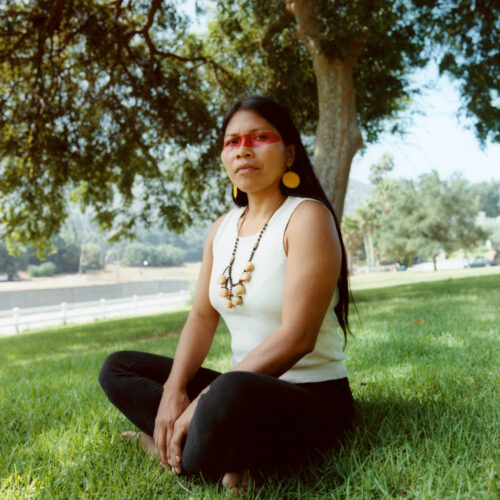As the sun hits the horizon, goosebumps run down your spine, and your eyes widen to the sight of an embrace between human and earth, a spiritual connection like no other. Captured in a visual offering, Bomba Estéreo released the music video for “Tierra,” a song delivering hope to humankind — to a world where disassociation from nature is standard. In celebration of Earth Day, Bomba Estéreo explored the mystical land of San Jose del Pacifico, Oaxaca through the movement of Liliana Saumet and Lukas Avendaño, a nonbinary Zapotec Indigenous performance artist. Directed and choreographed by Fana Adjani, “Tierra” presents a call to action to respect the planet we inhabit. “The earth should belong to everyone, as we belong to her, independent of race, identity or nationality,” Bomba’s founder Simon Mejia articulated.
While “Tierra” is only one song off Bomba Estéreo’s Grammy-nominated album, ‘Deja’ — a project drawing inspiration from the elements: Agua, Aire, Tierra, and Fuego — the Colombian duo uses the power of dance to disseminate a message of unity and compassion. “We made this album so you can dance to it at a club. But at the same time, it has a profound meaning. It’s meant for you to dance perreo with a conscience,” lead singer Liliana Saumet shared with LATINA.
Intimately collaborative and heavily influenced by a collective experience, ‘Deja’ brought in artists like Lido Pimienta, longtime friend, and producer Damian Taylor, who has worked with Björk, among others. The result was a community-centric project honoring the plurality of identity. By displaying the beauty and importance of one’s relationship with mother nature, “Tierra,” purges a cynicism that lies within us all.
Answering a call from Chile, where she’s kicking off an international tour, Liliana Saumet sat down with LATINA to discuss the process of creating the music video for “Tierra” and the lessons she learned from the collaboration on set — offering insight into a world where spirituality, naturalism, and togetherness align.
How have you been?
I’m good. Right now, I’m in Chile. We have a concert tomorrow. So we traveled last night, and I’m here in Chile. It’s a beautiful day, a sunny day, so I’m so happy.
I watched the visual offering of “Tierra” and was filled with so many emotions simultaneously. Can you walk me through the process of creating the music video?
The video took place outside in a beautiful town called San Jose del Pacifico. It is the place where María Sabina was born, a Chu’mana, a super important Chu’mana who worked with mushrooms. It’s a magic land, a sacred land, so I was so excited to be there. We worked with a group of artists, like my friend Fana Adjani, who is a choreographer and director. There were a lot of landscapes and a lot of choreographic work with dance and movement. [In the music video] we touch on Earth, Latin America, colonialism, and where we are.
How was it working with Lukas Avendaño, bringing this song to life through performance?
They are an amazing person. Their art is so deep and so beautiful. They are many things at one time; it’s so powerful. It’s amazing to know people like that because you don’t have the opportunity to meet people that are so connected to the Earth — so connected with their art, so connected with everything. And for me, it was a rebirth. Working with Lukas was like working with someone on another level. Everything they shared was so different, so much deeper. I learned so much after this experience.
Can you speak to the intimacy of the production and working with Fana?
It was like working with a friend, a woman, a choreographer, an artist. We did a lot of anthropologic work. We’re really investigators. She investigated our roads, our indigenous marshes. She mixed different elements with the production and the landscape because it was super important; you cannot see where we are. But you can feel it, and this is the thing with art. You don’t have to be there to feel it. When it’s real, it’s real.
How has the pandemic impacted the overall trajectory of this project?
We finished most of the album before the pandemic. But I think when we finished and wanted to put it out, we realized what we were talking about was happening. The album was like a prediction for what was happening right now, the future, and the present. Releasing an album during the pandemic was super interesting. People were in their houses, they needed positivity, and music is one of the most important things to change your mind. So, to have this album come out during the pandemic for people was the best thing ever.
What is something that you carry with you when creating a new project?
The most important thing that I carry with me is the experience of this album. I feel like I’m living the album right now. Songs that I wrote years ago and didn’t think about, but now I feel that everything has happened to me in my life. I can relate to this [song] now, and it’s so crazy. But the thing is, what I’m more connected with these days is being strong inside and being strong outside. I do things where I’m protected and connected with myself, so I can be strong for what is coming —for what’s next or for living in the present.

Courtesy of Sebastian Machado.
How was it working with Damian Taylor?
Oh, my God, it was amazing. One of the biggest parts of the album is because of him. He’s an amazing genius. He’s worked with so many, one of my favorite artists, Bjork. It was beautiful because he is so interesting, and he loved this album. He did this electronic ballad for this album; when you hear the sound, it’s really, really beautiful. The most important thing about an album is the sound and the mix, and I think he did a really good job mixing. Everything he does is made with love, and when you put love and intention into your work, it’ll always be amazing.
You use dance as a vessel to captivate an audience and express important messages; what was the process of using the dynamics of dance?
For the costumes, it was really important to mourn the Latin war. We used to dance and that’s it, so let’s dance and then think about it [processing emotional events]. I think it’s important to say something; Bomba has always said it because this is where I come from, the Caribbean coast. Music is not just for a party; music is a celebration of spirituality; music and dance are connected with the spirit. People dance to celebrate the spirit and to get rid of bad things. So I think human beings, again, forget that. Bomba has always been connected to dance. Growing up dancing, I would make people dance. And I love it because it brings people together when you dance; even if you don’t know the language, you can feel it. This was a super-specific intention for this album.
I want to talk about your community and the support you’ve had while creating this project leading up to the visual for “Tierra”?
I live in the jungle, in the Sierra Nevada de Santa Marta, and it’s actually a sacred place in Colombia. We have a lot of an indigenous community. The big brothers take care of the Earth, and we have a lot of people there. It’s not like a city, more like a little town, and so many people are moving to that part. In this community, a lot of people are doing spiritual work. So I think the community where I live is connected with that; it’s connected with all the things that I work for or that I talk about. It’s beautiful because we have the chance to choose where we want to live or how we want to live. And yes, I think all the people around me, we choose that, we choose to live in another landscape in another place. All the things that I do now are affected by my friends. I have reading sessions every Wednesday. I use ancestral medicine. I have learned to like doing meditation, yoga exercises for the week, and growing food. Everything that I do is affected by that.
How has this isolation, especially the isolation of the pandemic, impacted your craft?
It definitely changed our minds and our personalities. Even though I live in the jungle and I was living outside for almost the whole time with the community, I can feel how isolation affected my life. I’ve been in my house for almost two and a half years, and I used to travel a lot, and that changed. Everything has made me appreciate life more. I’m grateful for all the things that I have done, been in another country, and the people that I’ve met, and I feel so grateful. I was always busy, and now I feel more connected with my art and what I can do for people. I feel so blessed and grateful to have the chance to change one person’s mind. People would come to me and tell me ‘I was super depressed, and this album changed my life’. This might mean nothing to someone, but for me, to be able to save a life through my music, I feel so blessed and grateful for that.









